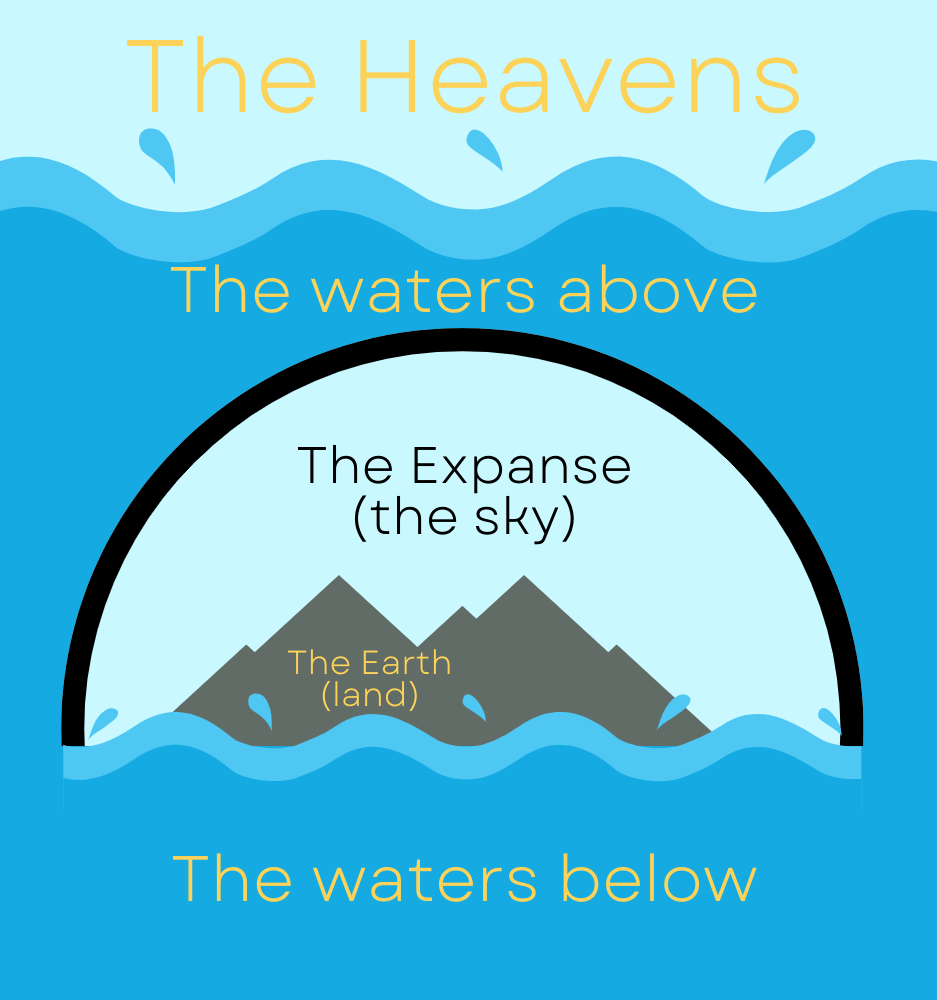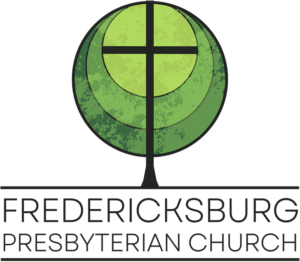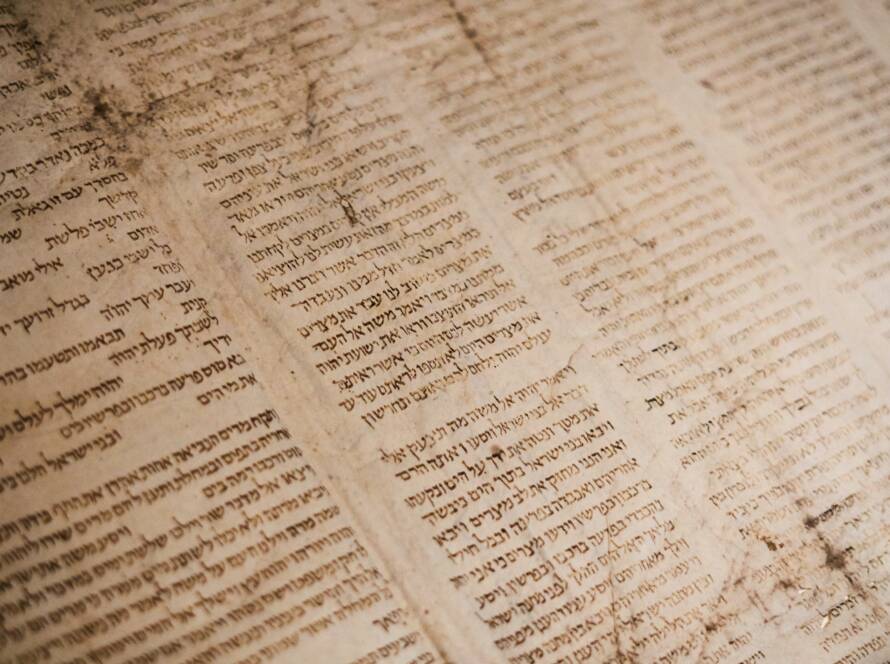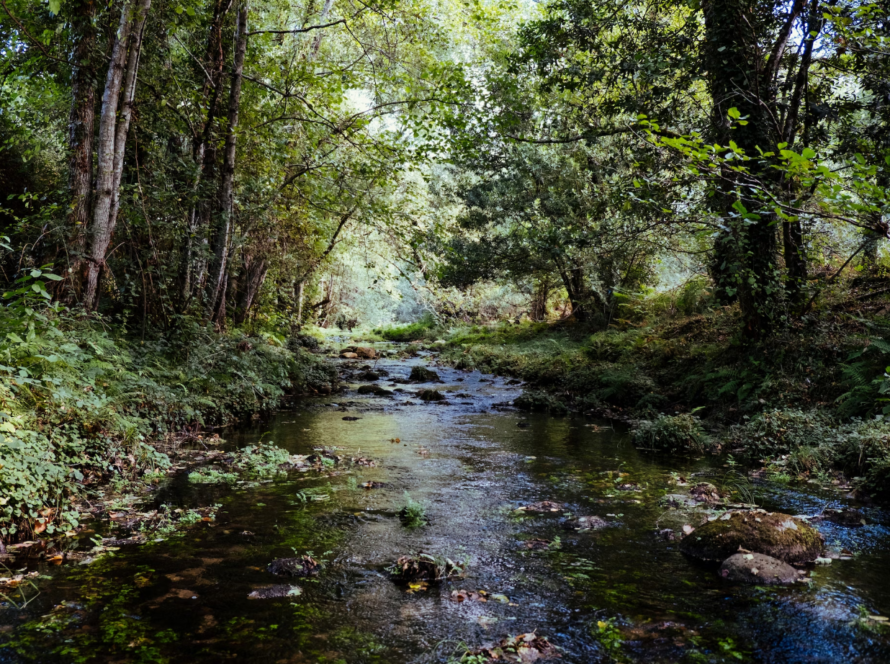Seeking Patterns: Out of the Waters
This week, as promised, we are going to start reading the flood story in light of another story. Once again, let’s start with a story most of us are familiar with, Genesis 1. This week we will be drawing parallels and seeking patterns between the flood story, and the 6 days of creation in Genesis 1. In this chapter, God creates the earth in six days. He creates the land, sky, and sea, and all of its inhabitants within 6 days, including humanity. This chapter certainly focuses on God’s majesty and sovereignty, and doesn’t focus too much on the details. Next week we will cover Genesis 2-3, which is a much more detailed narrative about creation, rather than the “big picture” of Genesis 1.
Let’s dive in by going through each day of creation, and see if we can draw parallels between them and the flood narrative.
Day 1:
Now the earth was formless and empty, darkness covered the surface of the watery depths, and the Spirit of God was hovering over the surface of the waters. Genesis 1:2 | God caused a wind to pass over the earth, and the water began to subside. Genesis 8:1 |
On day 1 of creation, the Bible says that when God began to create the earth, the “blank slate” that He started with was a vast surface of water. When God began to make the flood recede, of course that was a blank slate of water as well. Interesting, isn’t it? That both creation and the flood receding start the same way – with a vast expanse of water.
You probably didn’t pick out much more… but that’s because you don’t speak Hebrew. There is a word in Hebrew that refers to a kind of invisible, life-giving force – Ruach -רוּחַ. If you look at a tree swaying in the wind, that wind is ruach. What about when you take a deep breath, and feel that vitality in your lungs? Yep, that breath that keeps you alive is ruach. What about the invisible, life-giving Spirit of God? Once again, ruach. In the verses above, both the words “Spirit” and “wind” are translations of the Hebrew word ruach!
In both instances, God not only started His work over a vast, empty body of water, but He started it by sending His ruach over it. Awesome, right?
Day 2:
So God made the expanse and separated the water under the expanse from the water above the expanse. Genesis 1:7 | The sources of the watery depths and the floodgates of the sky were closed, and the rain from the sky stopped.” Genesis 8:2 |
So, day 2 of creation shows God separating these waters mentioned in day 1. He creates “the expanse” between “the waters above” and “the waters below.” Makes perfect sense right?… probably not.
To be brief, the way that the ancient near eastern people thought of the world was not a globe like we know it to be today. They believed that the earth was a disc covered with a solid dome called the firmament. The firmament kept the waters suspended above the earth. Basically, think of a snowglobe submerged in water. They thought that there was water below the earth (which is why there are springs and oceans), and water beyond the sky (which is why it rains). Here’s a diagram I made for you:

Ancient cosmology aside, we see similarities in the next verses of the flood receding and day 2 of creation, don’t we? In day 2, God separates the waters below and the waters above, and in Genesis 8, we see God doing the same thing – reversing what happened in Genesis 7:11 wherein “all the sources of the vast watery depths burst open, the floodgates of the sky were opened”
Day 3:
Let the water under the sky be gathered into one place, and let the dry land appear. Genesis 1:9 | The ark came to rest in the seventh month, on the seventeenth day of the month, on the mountains of Ararat. … Then he sent out a dove to see whether the water on the earth’s surface had gone down, but the dove found no resting place for its foot. Genesis 8:4, 8-9 |
God does two things on day 3 of creation, instead of just one thing like the previous days. First, God creates dry land. Land emerges from the sea in Genesis 1, and when the flood begins receding In Genesis 8, a mountain emerges from the sea. In both stories, land appears from the water.
Noah sends out a dove, but the dove finds no place to perch, but what happens next on day 3?
Day 3 Continued:
Let the earth produce vegetation: seed-bearing plants and fruit trees on the earth bearing fruit with seed in it according to their kinds. Genesis 1:11 | So Noah waited seven more days and sent out the dove from the ark again. When the dove came to him at evening, there was a plucked olive leaf in its beak. Genesis 8:10-11 |
Last time Noah sent out a dove, it had nowhere to perch, but now there is vegetation – it returns to him with an olive leaf! Just like the land was barren on day 3 of creation until God filled it with vegetation. But we’re not done with this bird quite yet!
Day 5:
Let the water swarm with living creatures, and let birds fly above the earth across the expanse of the sky. Genesis 1:20 | After he had waited another seven days, he sent out the dove, but it did not return to him again. Genesis 8:12 |
Noah releases the dove a third time. This time it does not return. Why? Because it goes to re-inhabit the world, just like how God created birds to inhabit the skies on day 5 of creation.
Day 6:
“Let the earth produce living creatures according to their kinds: livestock, creatures that crawl, and the wildlife of the earth according to their kinds.” … “Let us make man in our image, according to our likeness. They will rule the fish of the sea, the birds of the sky, the livestock, the whole earth, and the creatures that crawl on the earth.” Genesis 1:24-26 | Then God spoke to Noah, “Come out of the ark, you, your wife, your sons, and your sons’ wives with you. Bring out all the living creatures that are with you — birds, livestock, those that crawl on the earth — and they will spread over the earth and be fruitful and multiply on the earth.” Genesis 8:15-17 |
Just like a bird was released to inhabit the sky as a parallel to day 5 of creation, now the rest of the animals are introduced to inhabit the earth to parallel day 6 of creation! Just like day 3 though, God does two things on day 6.
Day 6 Continued:
God blessed them, and God said to them, “Be fruitful, multiply, fill the earth, and subdue it. Rule the fish of the sea, the birds of the sky, and every creature that crawls on the earth.” Genesis 1:28 | God blessed Noah and his sons and said to them, “Be fruitful and multiply and fill the earth. The fear and terror of you will be in every living creature on the earth, every bird of the sky, every creature that crawls on the ground, and all the fish of the sea. They are placed under your authority. Genesis 9:1-2 |
“Look, I have given you every seed-bearing plant on the surface of the entire earth and every tree whose fruit contains seed. This will be food for you Genesis 1:29 | Every creature that lives and moves will be food for you; as I gave the green plants, I have given you everything. Genesis 9:3 |
Noah and his family also exit the ark, just like God creating humanity on day 6. He even gives Noah’s family the exact same commands He gave humanity in Genesis 1, telling them to “be fruitful, multiply, and fill the earth” God also provides them with food in both sections.
Day 4:
A keen reader may have noticed that I skipped day 4. That’s because out of all the patterns and parallels between these stories, this is the only day of creation that is out of order in Noah’s story.
Let there be lights in the expanse of the sky to separate the day from the night. They will serve as signs for seasons and for days and years. Genesis 1:14 | As long as the earth endures, seedtime and harvest, cold and heat, summer and winter, and day and night will not cease.” Genesis 8:22 |
Closing
Isn’t that just amazing? There are so many patterns between these two stories! There is a distinct parallel for each day of creation as the flood recedes. Does that change the way you think about the flood? This story isn’t just about destruction, it’s also about re-creation. God eliminates all that is evil from the world, and saves all that is good to cleanse the world.
This world even has a new Adam, Noah. But the great tragedy is that even still “the inclination of the human heart is evil from youth onward.” What’s interesting is that we can meditate on the patterns between the two stories, and anticipate what is coming next… Just like another creation happens as the flood recedes, we know another fall is coming. This is what we Will discuss next week.
Thank you all for reading!
Matt




